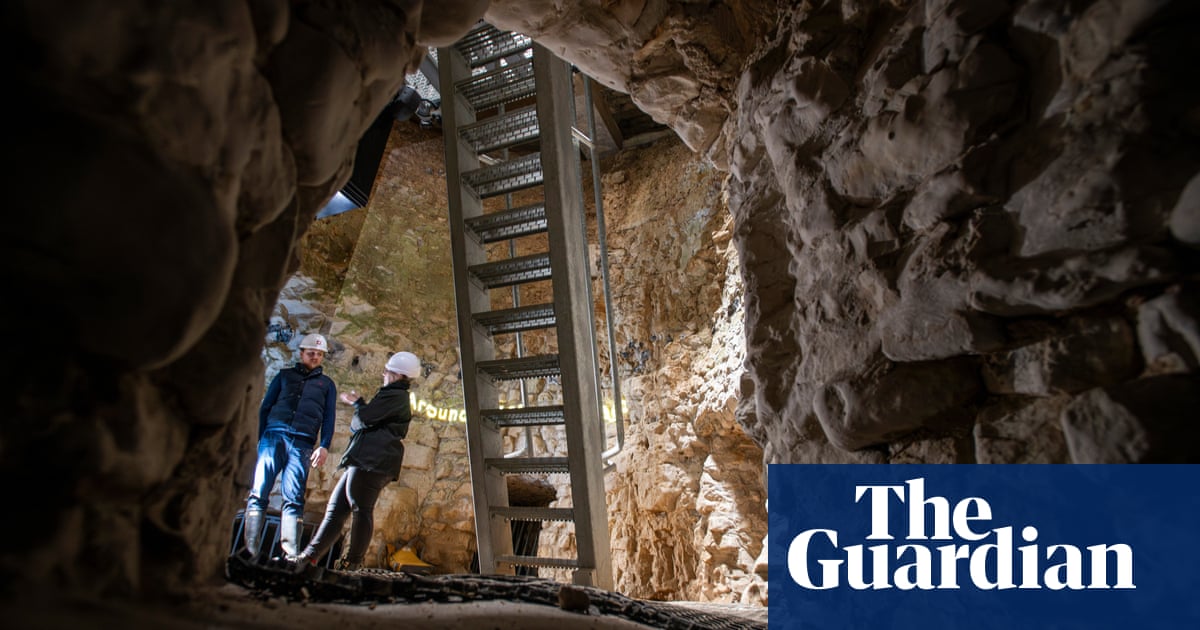
Ghost pingos, unique ponds forged by the ice age and buried during the era of industrial agriculture, are to be excavated to revive wildlife on two former farms.
Rare species including the scarce emerald damselfly and the northern pool frog are set to return to the pingos, which are being restored on farmland next to Thompson Common near Thetford in Norfolk, a little-known nature reserve whose 400 ancient ponds make it the pingo capital of Britain.
The first of 26 ghost pingos on Watering Farm is being excavated by Norfolk Wildlife Trust, a painstaking process which requires soil to be removed an inch at a time under expert supervision.
The restorers hope to precisely locate the former bottom of the pond to open up the still-viable seed bank that remains from when the ponds were filled in by a desire to “improve” farmland over the last 150 years.
“This is restoration from within,” said Jonathan Preston of Norfolk Wildlife Trust. “You can dig a pond anywhere but the unique thing with these is getting down to that original sediment which will unlock an ancient seed bank.”
“Pingo” is an Inuit word for hill, and the ponds were the result of springs forming subterranean ice pinnacles during the last ice age. When these melted, hundreds of small round ponds were created.
The pingos’ excavation will be overseen by experts led by Prof Carl Sayer of University College London, who has spearheaded the Norfolk Ponds Project, which has restored 250 lost ponds across the region.
Sayer said: “We know from our research that often quite rare plants can be preserved. Can we bring back things that are lost even from Thompson Common? We’re disturbing sediment from a time when there were no sprays, no fertilisers and much wilder places, so plants can come back and say hello.”
Once the original shape of the pond is excavated, the depressions will fill up naturally with an upwelling of water from the aquifer, releasing naturally filtered and nutrient-poor water in which sensitive aquatic plants and invertebrates such as diving beetles can flourish.
Initial tests by Sayer’s team have identified the dark layers of ancient pond sediment and seeds within it on the 60 acres of Watering Farm.
Norfolk Wildlife Trust is also planning to resurrect up to 40 ghost pingos it has identified on 130-acre Mere Farm, which it acquired after a fundraising appeal to expand the unique landscape of Thomson Common. The ghost ponds are first detected using old maps and aerial “lidar” laser scanning which reveals the ponds in hi-tech 3D maps.
This joining up and restoration of wetland habitats is crucial for the prospects of rare species such as the northern pool frog, which was reintroduced in Thompson Common in 2005. The native frog, which became extinct in Britain in the 1990s, is doing well, but requires a network of warm pools with surrounding vegetation in which to thrive.
Crucial to the success of resurrecting the ghost pingos is to remove subterranean drains that were installed in the 1970s when the land was intensively farmed. Traditional Breckland grassland will be revived around the pingos as a species-rich mosaic of glades, scrub and larger trees is allowed to develop.
One of Sayer’s previous restorations brought to the rediscovery of grass-poly, a delicate pink wildflower that is one of Britain’s rarest plants and had been lost to Norfolk for a century. He said that some seeds in ancient sediments could possibly remain viable for hundreds of years.
Sayer predicted that the ghost pingos would be brimming with life by this time next year. “When you restore ponds and go back there, sometimes it’s just gobsmacking. It’s almost the most successful form of restoration we know of in Britain – you create systems that are flourishing, alive and very quickly working again.”












